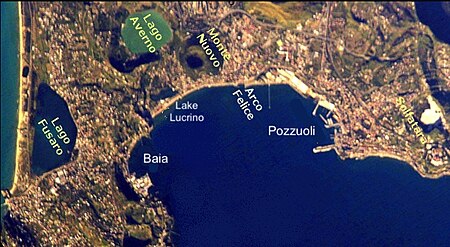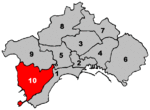The Campanian Ignimbrite eruption (CI, also CI Super-eruption) was a major volcanic eruption in the Mediterranean during the late Quaternary, classified 7 on the Volcanic Explosivity Index (VEI). The event has been attributed to the Archiflegreo volcano, the 13-kilometre-wide (8.1 mi) caldera of the Phlegraean Fields, located 20 km (12 mi) west of Mount Vesuvius under the western outskirts of the city of Naples and the Gulf of Pozzuoli, Italy. Estimates of the date and magnitude of the eruption(s), and the amount of ejected material have varied considerably during several centuries the site has been studied. This applies to most significant volcanic events that originated in the Campanian Plain, as it is one of the most complex volcanic structures in the world. However, continued research, advancing methods, and accumulation of volcanological, geochronological, and geochemical data have improved the dates' accuracy.The most recent dating determines the eruption event at 39280±110 years BP and results of 3‑D ash dispersion modelling published in 2012 concluded a dense-rock equivalent (DRE) of 181–265 km3 (43–64 cu mi) and emissions dispersed over an area of around 3,700,000 km2 (1,400,000 sq mi). The accuracy of these numbers is of significance for marine geologists, climatologists, palaeontologists, paleo-anthropologists and researchers of related fields as the event coincides with a number of global and local phenomena, such as widespread discontinuities in archaeological sequences, climatic oscillations and biocultural modifications.












